Welcome to our exclusive guide on elevating your virtual tours! In this comprehensive blog, we’ll cover the three essential layers of virtual tours: content, navigation, and information. With over 10 years of experience and more than 3,000 tours under our belt, we’ve gathered valuable insights into what makes a virtual tour exceptional and we’re excited to share this with you. So join us as we share our tips for taking virtual tours like yours to the next level.
Let’s start with the fundamentals. A virtual tour comprises three essential layers:
So first up, let’s talk about the content layer.
The content layer forms the foundation of your virtual tour, captivating users with visually stunning assets. Here are three tips we would suggest to enhance this layer:
Tip #1: Dress Up the Spaces
There’s nothing worse than a dull, lifeless space in a virtual tour. To captivate your audience, ensure your spaces are well-lit, tidy, and visually appealing. But don’t stop there – think about how you can infuse each space with storytelling elements. Introduce props, arrange furniture thoughtfully, and consider incorporating people to add depth and vitality to the scene.
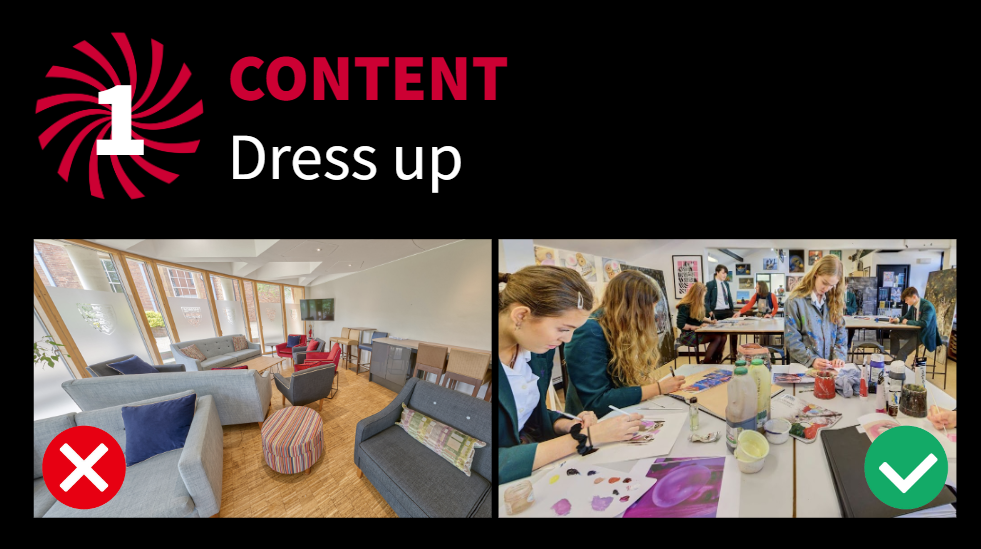
Tip #2: Aim High
In the world of virtual tours, resolution matters. While many 360-degree cameras offer decent resolution, don’t settle for the bare minimum. Aim for higher resolutions, such as 12K, 16K, or even 20K, to showcase every detail with clarity. Utilise high dynamic range (HDR) to enhance visual fidelity and bring your spaces to life.
 Tip #3: Embrace the Less is More Approach
Tip #3: Embrace the Less is More Approach
Gone are the days of labyrinthine virtual tours with countless clickable elements. Instead, focus on quality over quantity. Opt for a curated selection of well-dressed 360-degree scenes that offer users a seamless navigation experience. By streamlining your tour and minimising unnecessary clicks, you’ll keep your audience engaged and immersed.
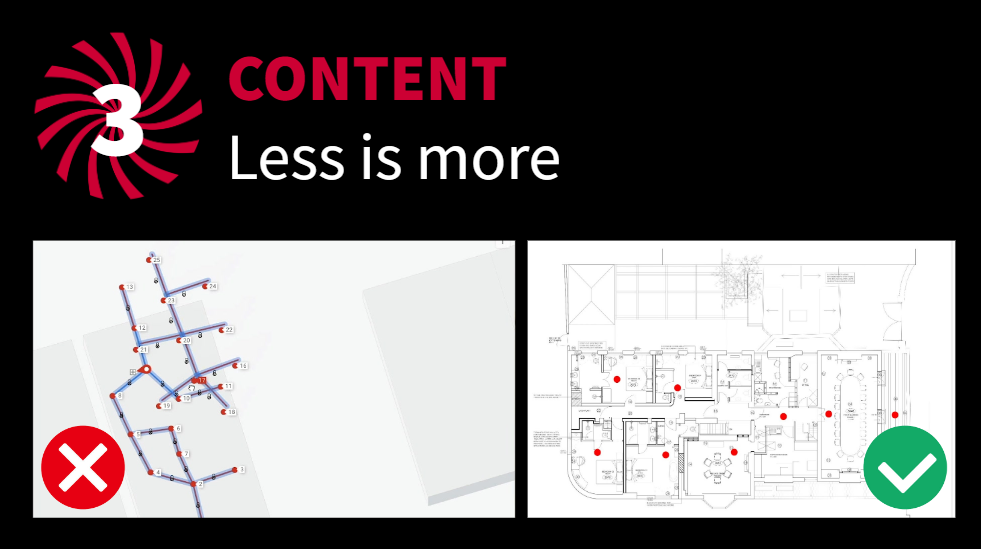
Next up, the navigation layer.
Effective navigation is essential for guiding users through your tour seamlessly. Here are five key considerations for mastering navigation:
1. Onboarding Sequence: To kick things off, consider implementing an onboarding sequence to welcome users into your virtual world. Rather than thrusting them directly into the first scene, a splash screen accompanied by onboarding instructions can orient users and instil confidence in navigating the tour.
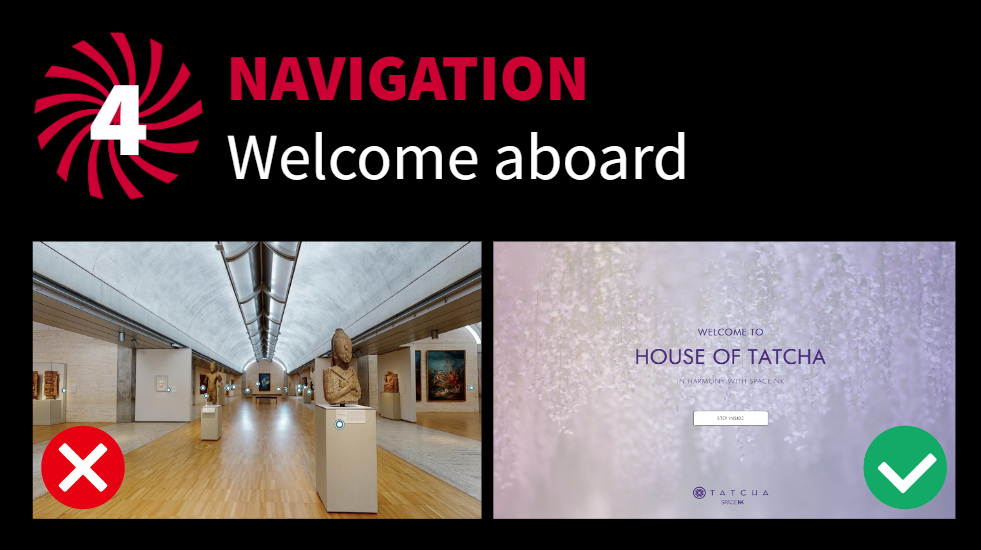 2. Multiple Navigation Options: Provide users with more than one way to navigate. While traditional sidebar menus are common, offering additional options such as floor-to-floor navigation, scene-to-scene transitions, or an interactive map can enhance the user experience and cater to diverse preferences.
2. Multiple Navigation Options: Provide users with more than one way to navigate. While traditional sidebar menus are common, offering additional options such as floor-to-floor navigation, scene-to-scene transitions, or an interactive map can enhance the user experience and cater to diverse preferences.
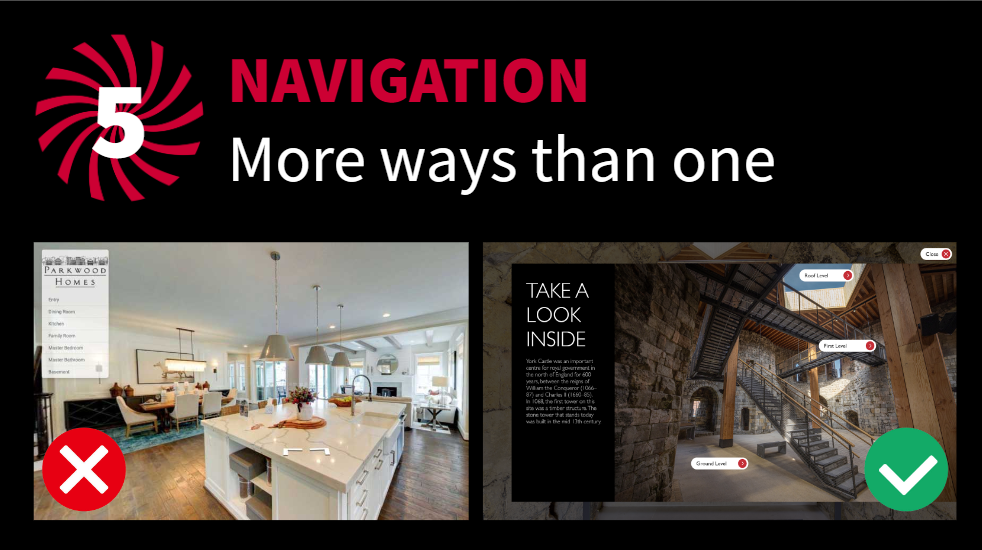
3. Storytelling Navigation: Elevate your virtual tour by incorporating sequential, chapter-style navigation. This approach guides users through a curated series of scenes, ensuring they experience the tour in a cohesive narrative flow. By strategically guiding users, you can ensure they explore all essential elements of the space.
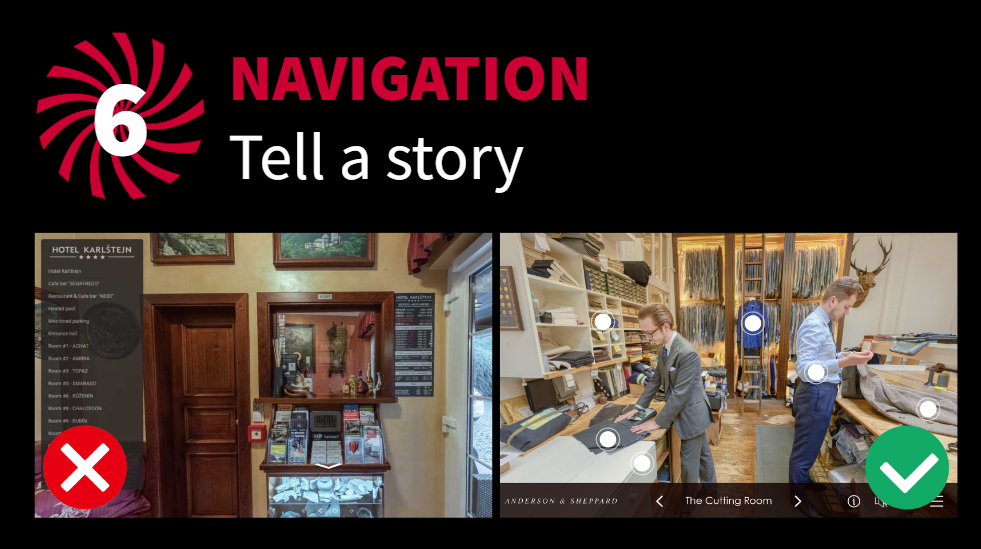 4. Accessibility Considerations: Prioritise accessibility by implementing features such as keyboard controls, screen reader compatibility, high contrast text, and large fonts. Ensuring your virtual content is accessible to all users not only promotes inclusivity but also expands your audience reach.
4. Accessibility Considerations: Prioritise accessibility by implementing features such as keyboard controls, screen reader compatibility, high contrast text, and large fonts. Ensuring your virtual content is accessible to all users not only promotes inclusivity but also expands your audience reach.

5. Time and Space Variations: Enhance user engagement by showcasing different perspectives of the same scene. Experiment with showcasing various times of day, toggling between day and night views, or demonstrating different configurations of furniture within a space. These variations offer users a dynamic and immersive experience, adding depth to your virtual tour.
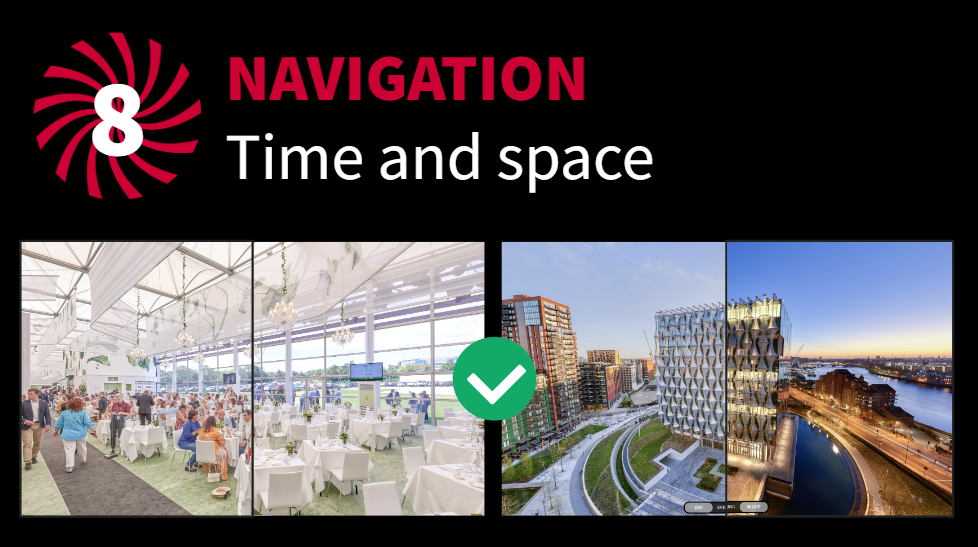
The information layer enriches the user experience by providing context and additional resources. Here are five key suggestions we’d suggest for unveiling this layer:
For those looking to push technical boundaries even more – beyond 360 videos and VR – there are also more capabilities you could incorporate to add content or help frame your virtual tour. Augmented Reality, Interactive 3D and Virtual Worlds are some good examples!
As we conclude this guide, we hope these insights empower you to create captivating and memorable virtual tours. If you require further assistance or guidance, don’t hesitate to get in touch. Happy virtual-touring!
P.S. If you prefer learning through video content, you can also find all this information in a 3-part video series here by our Creative Director Jay – take a look.